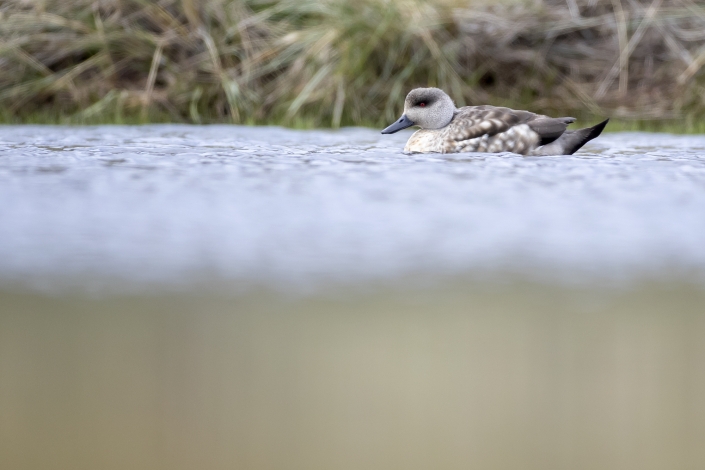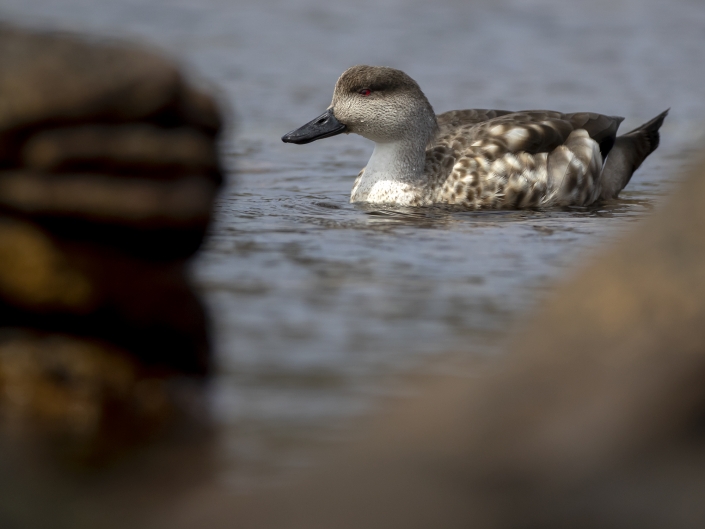This post is also available in: Swedish
Patagonian crested duck – Lophonetta specularioides specularioides
Patagonian crested duck – Lophonetta specularioides specularioides
also known as the southern crested duck, or the grey duck in the Falkland Islands, is the nominate of two subspecies of the crested duck.
The duck has a grey chin, neck and face, with the body plumage a mixture of brown and grey feathers giving a mottled look. Its eyes are red with black pupils. The crown and the feathers surrounding the eyes are dark brown or blackish. The tail feathers are also dark, sometimes black. It has a black beak and dark grey to black legs and webbed feet. It moults twice a year and also has an annual wing feather moult. It is a medium-sized duck around 50–60 cm in length. Females and males weigh about 1 kg though usually the males are slightly larger. It is very similar to the other subspecies, the Andean crested duck, differing in being slightly smaller, with more distinctively mottled underparts, and a lighter purple speculum with green or bronze reflections.
Young ducks have smaller crests than the adults, or lack crests entirely. The faces of the young birds are browner than those of the adults; the abdomen is also much whiter and the mandible a pinkish colour.
The duck occurs in southern South America, where it is found in Chile, Argentina and the Falkland Islands. It may be found by the coast or in freshwater. It lives in marshland, swamps, lakes and pools, or in sheltered bays on the coast. It is non-migratory; in winter it finds a sheltered place to stay during the colder months. For high altitude and high latitude birds this usually involves dispersing along the South American coast.






